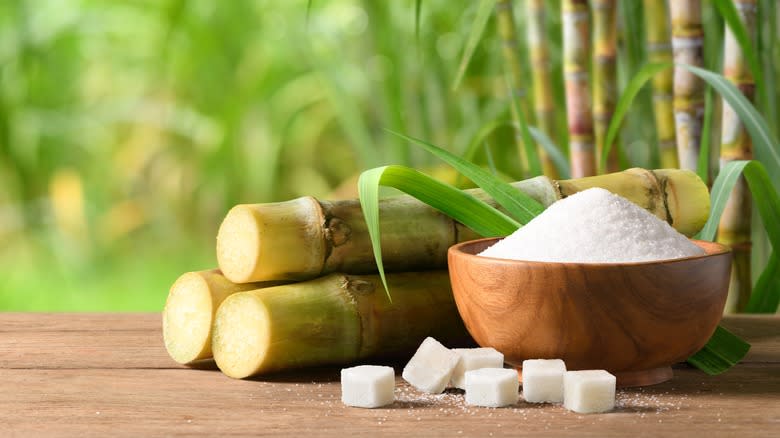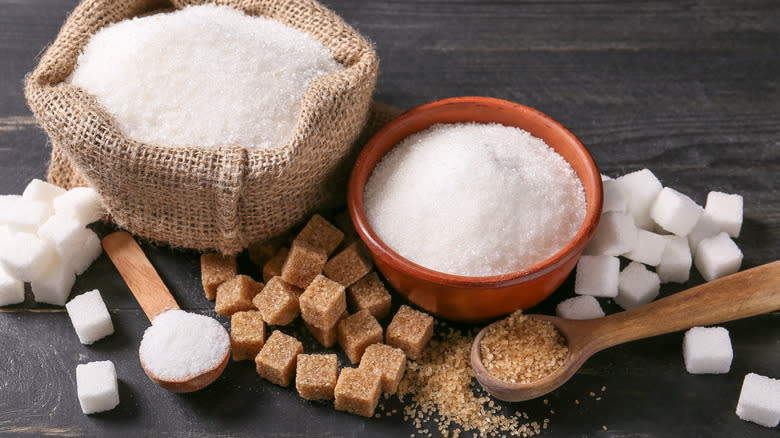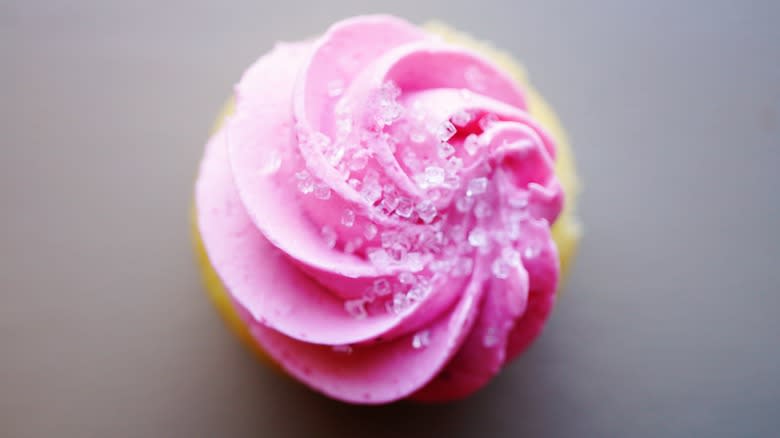The Difference Between Sparkling Sugar And Regular

The sweet, delicious tinge of sugar takes countless forms, creating a range of colors, tastes, and textures to choose from. When a recipe calls for sugar, it may specify a super fine powder, brown sugar, or even molasses. Then again, it may stipulate lesser-used varieties, such as sparkling sugar. Each of these different types of sugar is produced in a slightly different way, bringing out qualities that best serve different needs.
By way of definition, regular sugar is the same as white sugar, table sugar, and granulated sugar. It has a fine grain and is the most commonly used form of sugar. On the other hand, sparkling sugar features a chunkier grain and serves a different function in the kitchen. Sparkling sugar is sometimes referred to as coarse sugar, which is technically a slightly different thing. In reality, the size of the sparkling sugar grains falls between that of granulated and coarse sugars.
Read more: Cake Hacks Every Baker Will Wish They Knew Sooner
Distinctions Between Sugars

To add another layer of definition, sparkling sugar is also often lumped together with sanding sugar. However, sanding sugar is a finer-grained form of sparkling sugar. It's worth noting that both sanding and larger sparkling sugars look "sparkly" and can serve many of the same purposes. Sometimes their names are even used interchangeably. The only true difference is the size of the granules, which can affect the finish of the dish, so it comes down to a matter of preference when choosing one over the other. Both of these sugars, along with coarse sugar, all fall into the category of decorating sugars.
The look and feel of the different sugars make them easy to distinguish from one another. Pile a cup of regular sugar next to a mound of sparkling sugar and you'll easily identify the differences in appearance. Sparkling sugar is bigger than regular granulated sugar. Sparkling sugar grains stand out, and you might recognize them as common cookie decor. In addition to visual differences, these sugars perform differently too. Regular sugar is quick to dissolve, melt, and blend into other ingredients. In contrast, sparkling sugar's coarse texture means it can be sprinkled onto the surface of hot foods without melting, so it keeps its sparkly appearance and crunchy bite without dissolving.
When To Use Regular Sugar And When To Break Out The Sparkling Sugar

Most home cooks are familiar with the many uses of granulated sugar. It's a versatile sweetener found in a variety of foods. From lemonade to sweet tea, it's also the primary choice for many types of drinks. Regular sugar is also the top selection for many types of baking, taking a starring role in a range of foods from cakes to cookies to breads. White sugar is also used in sauces, from ketchup to dressings. Its light texture is also perfect for making the best whipping cream and meringues.
The larger granules of sparkling sugar, on the other hand, serve a more specialized function. This type of sugar is reserved for decoration, topping muffins, cookies, candy, sweet breads, and pie crusts. The sparkly effect creates an eye-catching appeal to an otherwise bland-looking scone while the coarse composition allows it to easily stick to the surface. Sparkling sugar comes in a variety of colors and you can even make your own colors at home, providing an endless array of shimmering sugary topping options.
Read the original article on Daily Meal.

